I cleaned, polished, and honed these three vintage razors a while ago, but didn’t get to posting a mail call. The main act here is definitely the big Henckels 14:
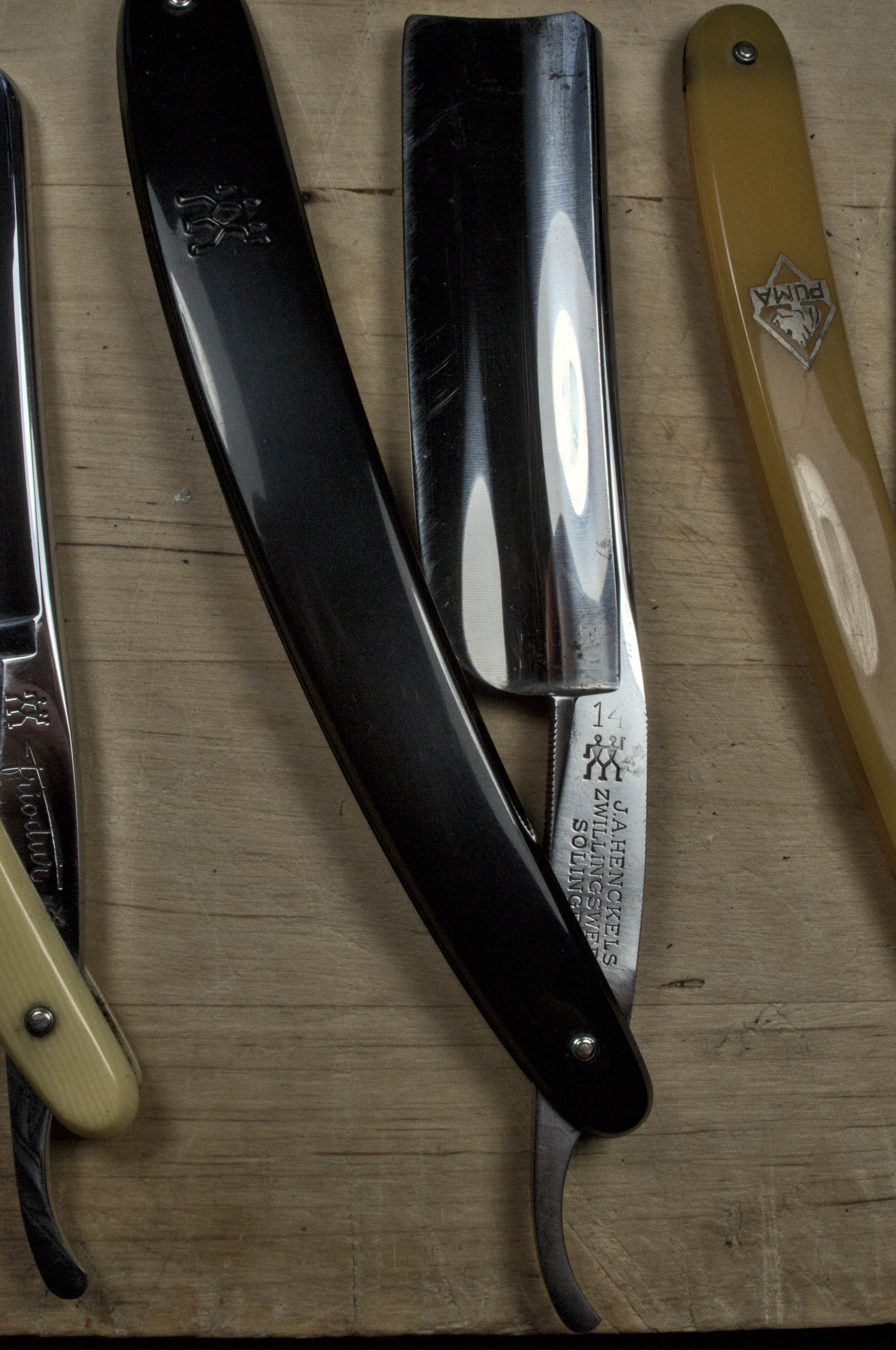
It is in great condition, just a bit of surface corrosion at the toe where the hollow grind touches the scales. I’m always amazed by how quickly these extra hollow 14 razors hone up. It really barely takes any work to get a great edge. This is my third 14 razor, the other two being a Filarmónica 14 and a Henckels Friodur 14 (the stainless successor of this new acquisition). Two shaves with this were wonderful.
The little Puma 88 is a fairly standard ⅝" round tip German hollow ground, but it seems extremely well-made. The absolutely even stamp on the shank, the completely regular jimps, and the pretty scales with brass inlay and the stamp around the pivot pin all scream quality without opulence. I get the hard-to-describe feeling from this razor that I also get from a well made hammer or screw driver. Great shaver.
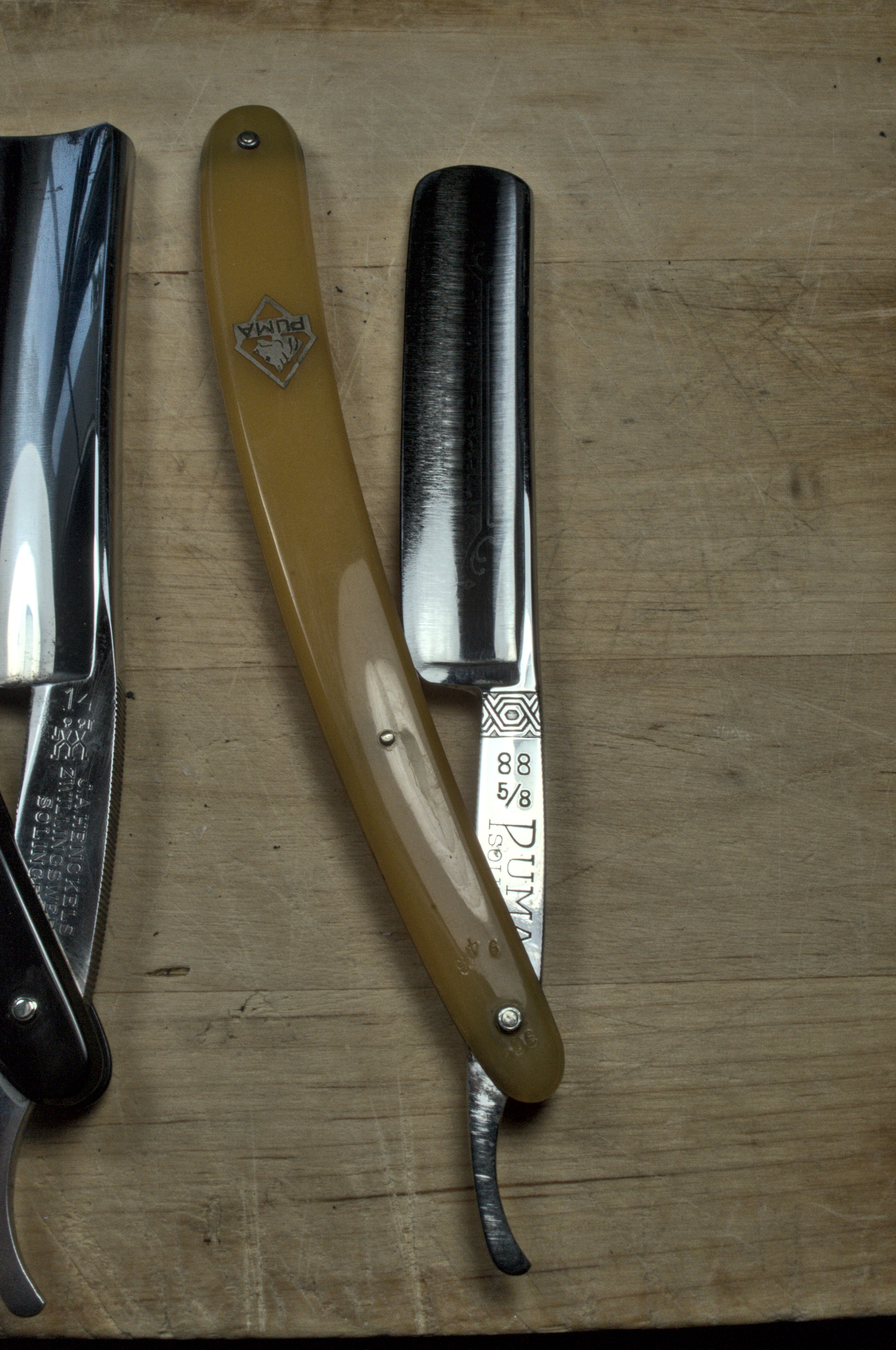
Finally, this poor Frio 72½ took some serious abuse from its previous owner. If you look closely, you can see that the bevel looks wavy around the middle of the blade.
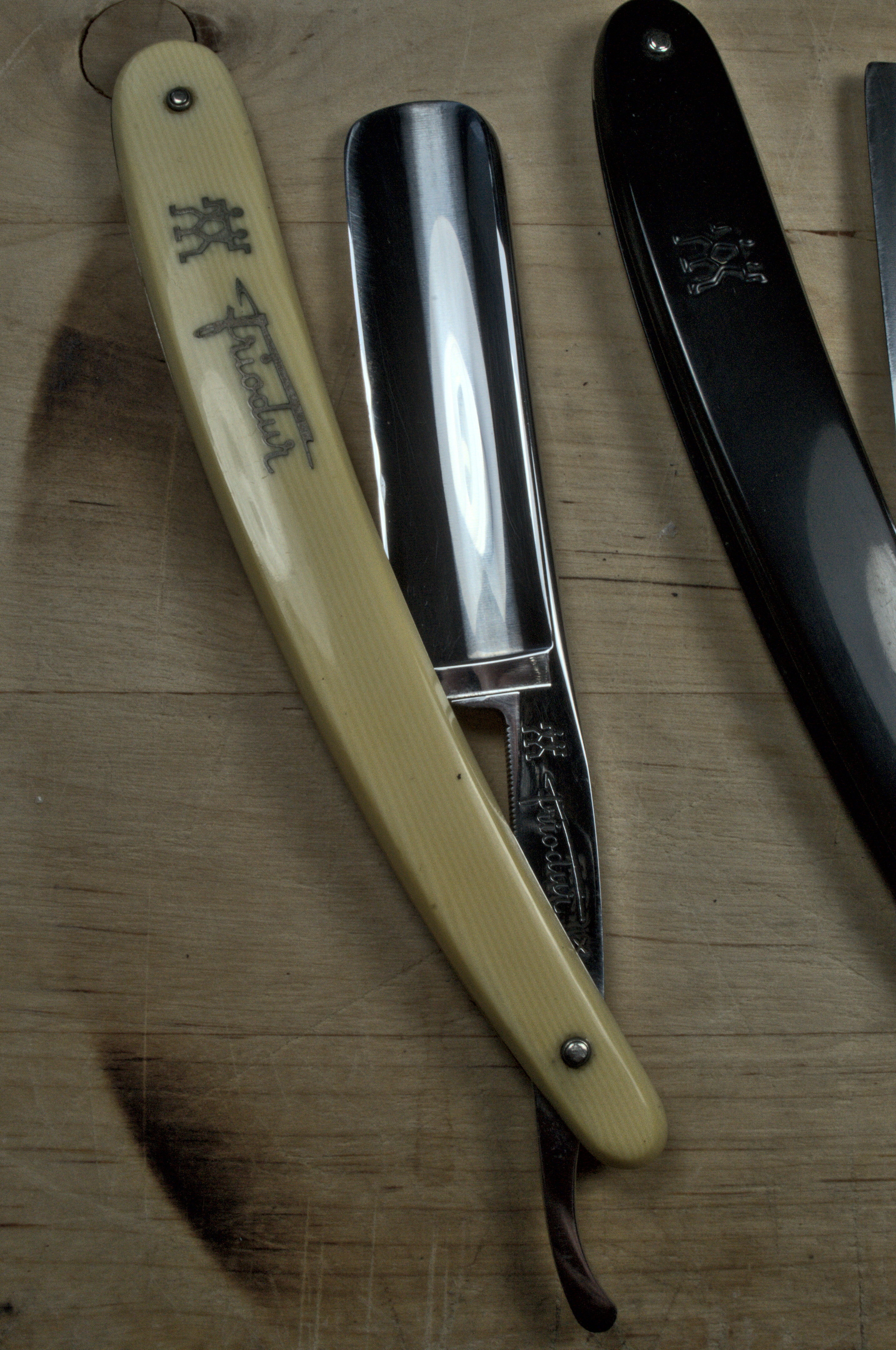
Here’s a close-up.
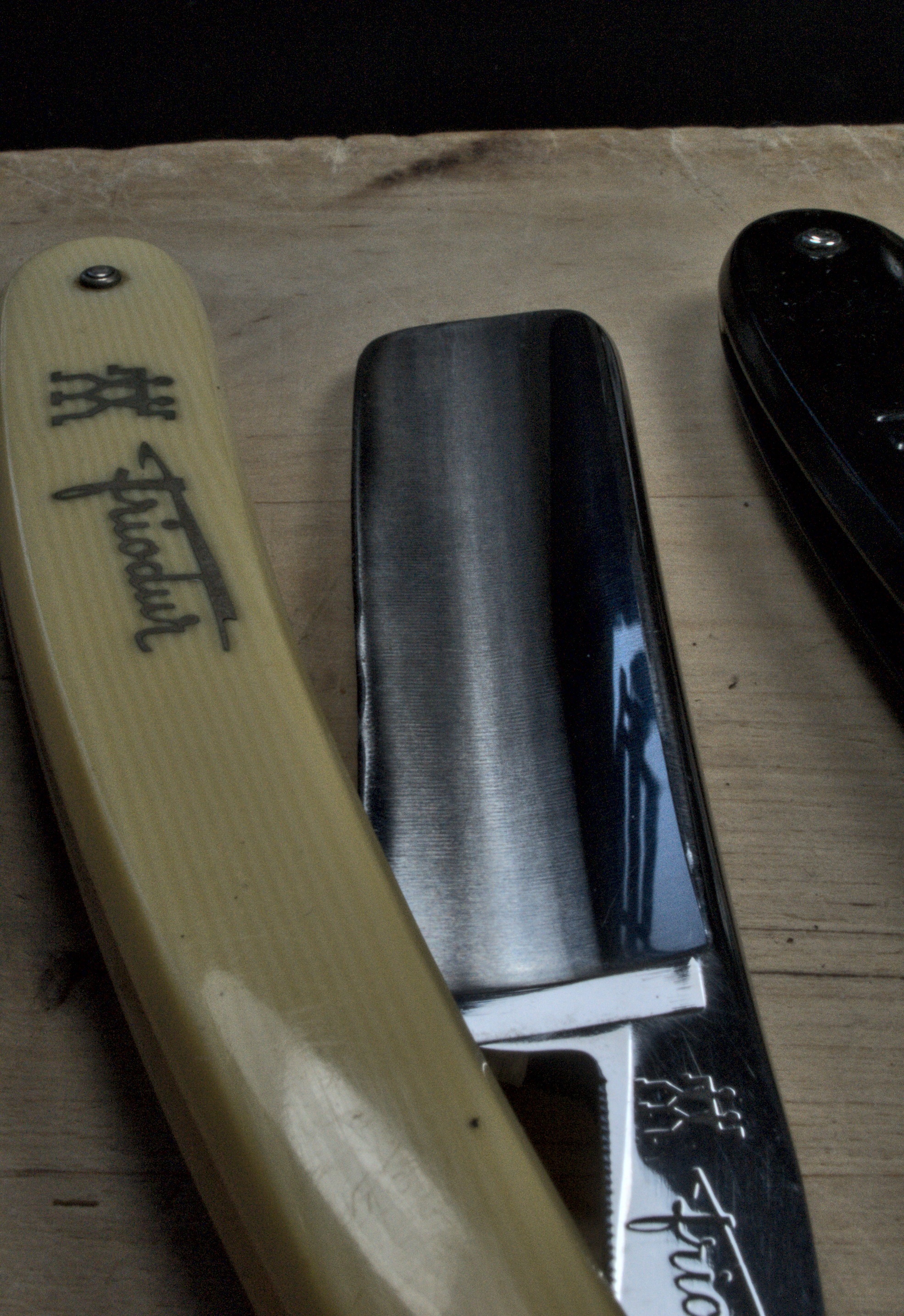
The reason is that the edge has been bent out of true in three places. When I bought the razor, the images for the offer were taken in a way that didn’t show this issue. I almost tossed the razor after it arrived, but then I decided to give it a try and it turns out it has no impact on shave quality. I’m still not sure whether to keep this razor of PIF it maybe.
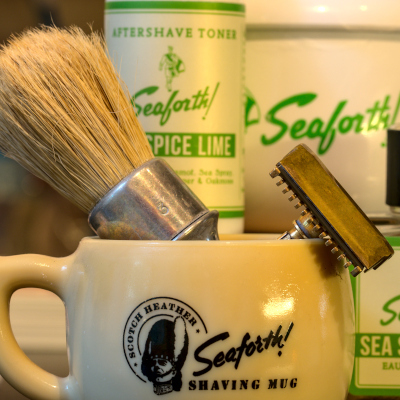
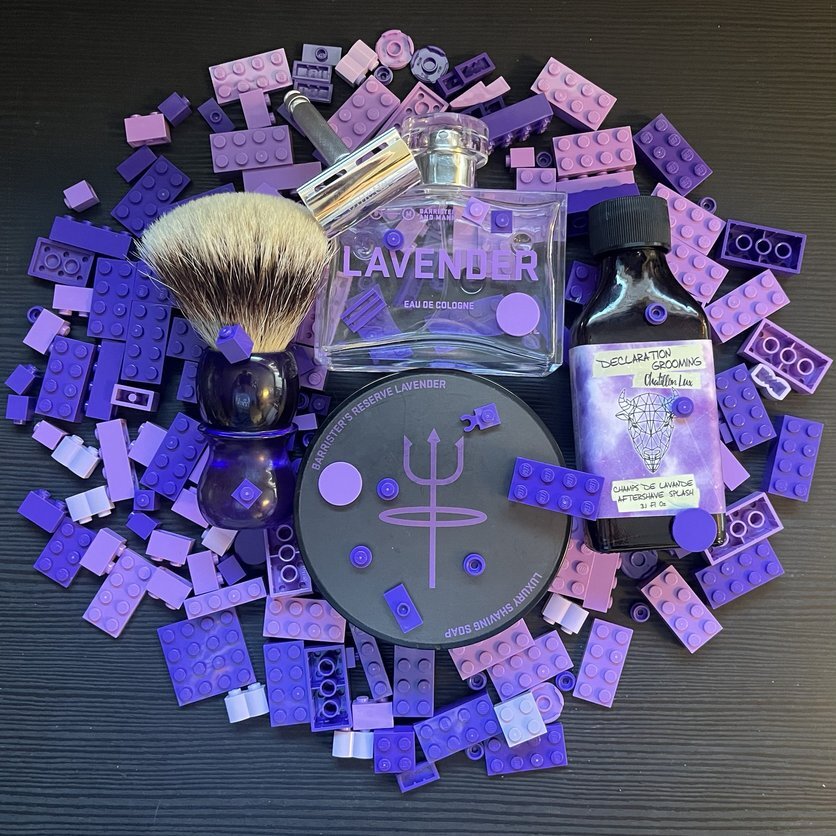
For bulk material removal, the direction of motion does not matter, as I’m sure you know. However, when you get to edge refinement it does. The direction of abrasion draws out the apex as the bevel angle narrows. As Science of Sharp shows, the apex can have a foil burr, but this is easily overcome with stropping, and stropping also creates a micro-convex shape at the apex that I’ve found to enhance shave comfort.
If you load this strop (or another if you want this one to stay pristine) with a thin layer of 1 micron diamond paste your deburring problems will be solved. Years ago I was told that the high quality diamond pastes “tend” to have more consistency in particle size than the green chromium oxide waxy pastes.
(@whosgotthepudding)
That’s probably right, but when I get to choose whether I load a thin shell in in-plane compression or traction, I’ll prefer traction to avoid buckling, just in case. Probably just superstition at this point.
I’m not sure I have a deburring problem 😅
Note that there is significant empirical evidence resulting from honing extra-hollow ground razors with in-plane compression. That said, I make my passes rather slowly and at light pressure to minimize buckling that may, or may not, occur 🤨
Absolutely.
Fair enough. I may have misread your comment.